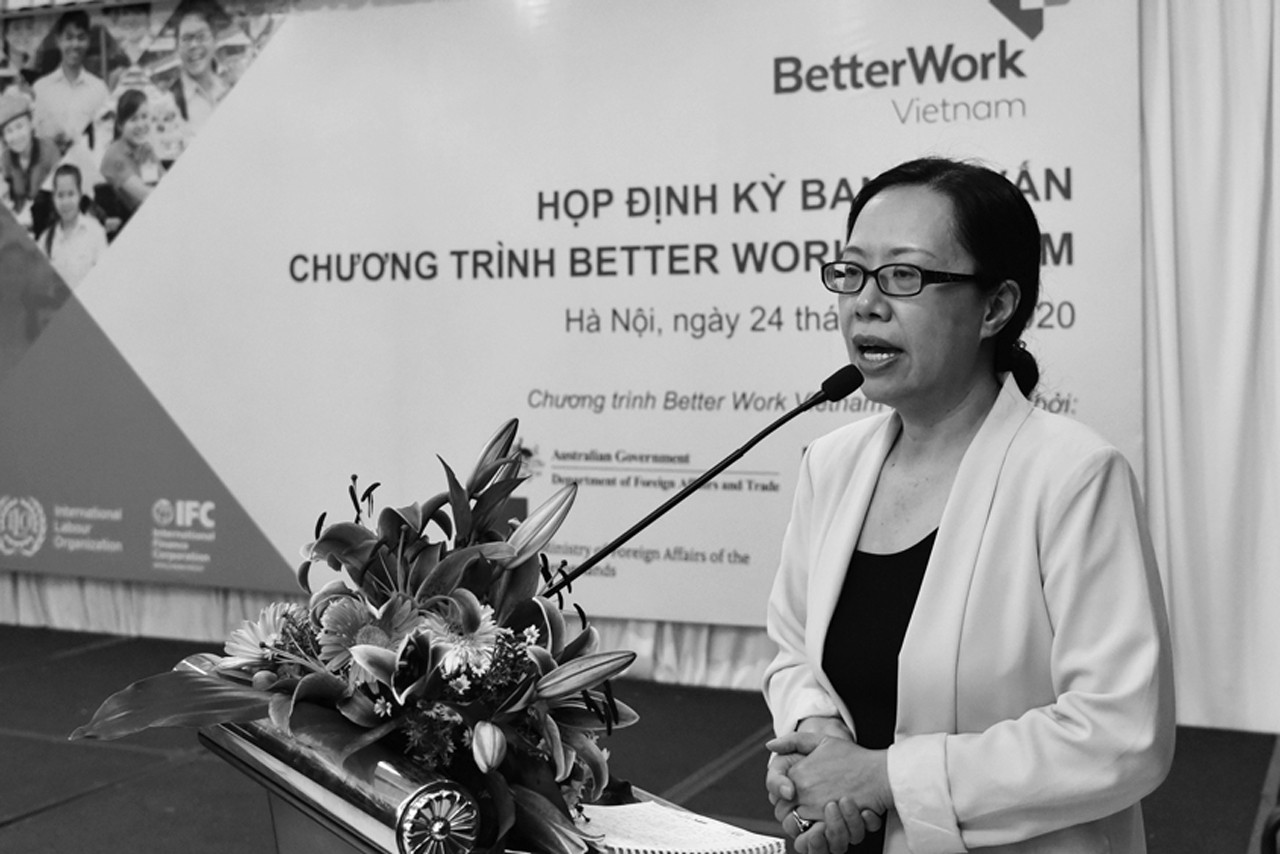
Head of Brand Relationships, Better Work Tara has worked in the field of labor rights for the past 20 years, with a particular focus on working with brands in the apparel sector.

Country Programme Manager, Better Work Vietnam
Ha joined Better Work in 2013 after a 20-year career with the Vietnam Chamber of Commerce and Industry, which represents the business community and employers’ associations
Both Tara and Ha have worked extensively on trade and business development issues and collaborated with international brands throughout their careers. Tara has worked in the field of labor rights for the past 20 years and came to the ILO after 10 years working on corporate social responsibility. Ha joined Better Work in 2013, after a 20-year career with the Vietnam Chamber of Commerce and Industry, which represents the business community and employers’ associations.
Purchasing practices is a hot topic, why do you think this is?
TR: The issue of brands’ purchasing practices has been on the table for quite a while, but it really started to hit the headlines when COVID-19 shut major consumer markets, and brands started to cancel their orders. It was at that point that the world started to pay attention to the role that brands’ own buying impacts factories and workers in their supply chains.
NHH: The global garment supply chain has been characterised as buyer-driven for many decades. Fortunately, we have seen the trend of improved working conditions as part of the brands’ commitment towards labour rights. At the same time, purchasing practices have been identified as one of the main factors that makes positive changes in working conditions unsustainable. As a result of the imbalanced bargaining powers between brands and manufacturing suppliers, suppliers are often in a disadvantageous position when negotiating business deals with the brands. Rethinking purchasing practices is one way to rebalance the power.
What have brands already done to address their buying practices? What more do they need to do?
TR: What we have found in our work with brands is that the majority still see compliance responsibility simply as their factories’ responsibility, without looking at their own processes and how they may affect their factories’ ability to comply with labor laws and standards. Those who are at the forefront have been bold enough to raise the issue of their own purchasing practices within their own businesses to create awareness and accountability. The crucial first step is for brands to train staff across the company, regardless of their role, on how their daily decisions have repercussions across their supply chains.
NHH: The good news is that brands who have genuine commitment towards building a more equitable garment supply chain have taken proactive actions to address the issues. They have incorporated social responsibilities into their sourcing strategy and communicated publicly about their commitments. Internally, they made substantive efforts to ensure cohesive approach across different teams – sourcing teams are talking to CSR teams. Some brands are even more progressive by partnering with other organizations like Better Work for input. Most importantly, brands that focus on purchasing practices have “walked their talk” through alignment from HQ to the field to ensure that discussions translate into practice.
Better Work is offering this training to government, employer and worker union partners as well as brands, how is the training relevant to that group?
TR: It is essential for all stakeholders to have a full understanding of the dynamics at play in global supply chains. Greater understanding by governments will help to ensure they create an investment climate that promotes best in class labour practices; unions will benefit through access to more actionable data; and manufacturers will gain essential information to use in discussion with their brand customers.
NHH: The training is absolutely relevant to all these key stakeholders. Through the training, the partners gain not only the knowledge, but they also have the opportunity to gain a better understanding of different roles, seeing things from other views. Most importantly, this brings to light how partnership can help address chronic and emerging issues in the supply chain. I really hope the training can help kick start a new journey of building trust among the stakeholders.
This is a great training, but it’s short. How do we learn more about tackling purchasing practices and how to have a positive impact?
TR: Better Work offers an in-person (or virtually facilitated) deeper dive training on purchasing practices to help brands or other stakeholders explore how the information provided in the e-learning applies to their own company and role. We encourage participants to take this follow-up training as it will help them turn the theory into concrete and actionable next steps.
NHH: Training is just the start of a long journey. I trust the continued partnership and regular knowledge sharing and dialogues among key stakeholders at different levels in the supply chain would help promote transparency, identify and address issues in a more timely and sustainable manner. At all levels, workers’ interests and safety should be placed at the center of these conversations. In a sector dominated by women workers, good purchasing practices and a healthy supply chain must consider gender equality as a critical indicator of success.
Learn more and register HERE.